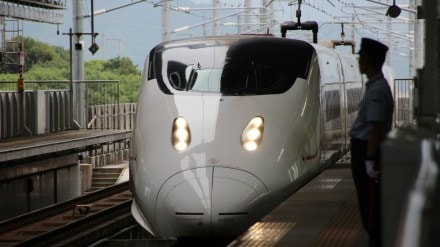Union Railway Minister Ashwini Vaishnaw has confirmed the significant progress of India’s first bullet train, expected to commence operation on the Ahmedabad-Mumbai route by 2026. Over the span of six years, more than 290 km of track out of the total 508 km, including bridges over 8 rivers and construction of 12 stations, have been completed. Minister Vaishnaw expressed confidence, stating, “The work is nearing completion.”
Bullet Train set to run in 2026
Vaishnaw further elaborated on the progress, mentioning that work is underway at two depots, and the project is advancing at a rapid pace with the goal of opening its first section by 2026.
Challenges for bullet train
The journey of the bullet train project hasn’t been without its challenges. Given the anticipated speed of over 300 kilometers per hour, ensuring stable tracks became paramount. Initiated in 2017, it took two and a half years to finalize the design of the trains. Minister Vaishnaw emphasized the need to address issues such as vibrations caused by high-speed trains, as well as the logistics of power supply, speed, and aerodynamics.
Despite facing setbacks during the COVID-19 pandemic, the construction program has persevered. The Railway Minister noted the initial reluctance from Maharashtra, spearheaded by Chief Minister Uddhav Thackeray, which caused delays in the project’s timeline.
Project includes a 21-kilometer tunnel
However, despite these challenges, significant progress has been made. The project includes a 21-kilometer tunnel, with a 7-kilometer stretch passing beneath the sea, reaching depths of up to 56 meters. Within this tunnel, the bullet trains are slated to operate at speeds ranging between 300 and 320 kilometers per hour.
The primary objective of the project is to establish a high-frequency mass transportation system by implementing Japan’s Shinkansen technology, commonly referred to as the bullet train, for the Mumbai-Ahmedabad High-Speed Rail.
